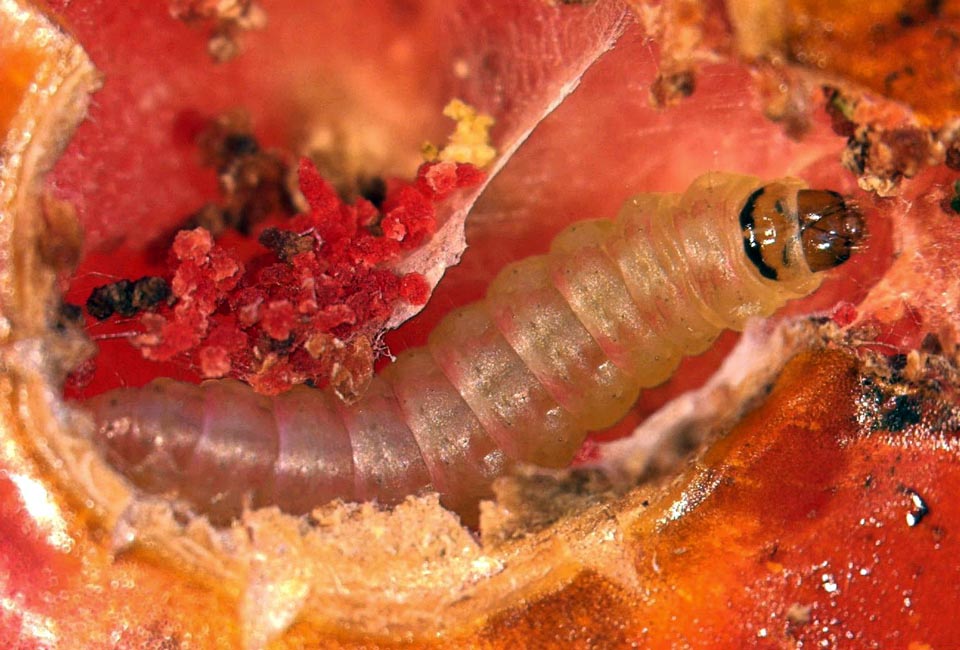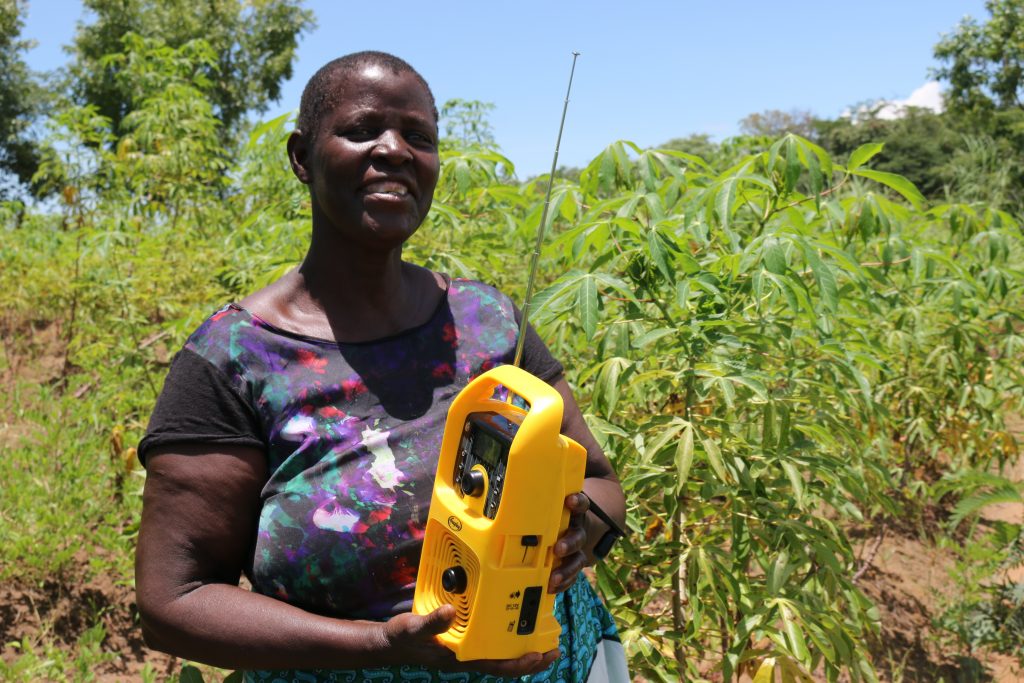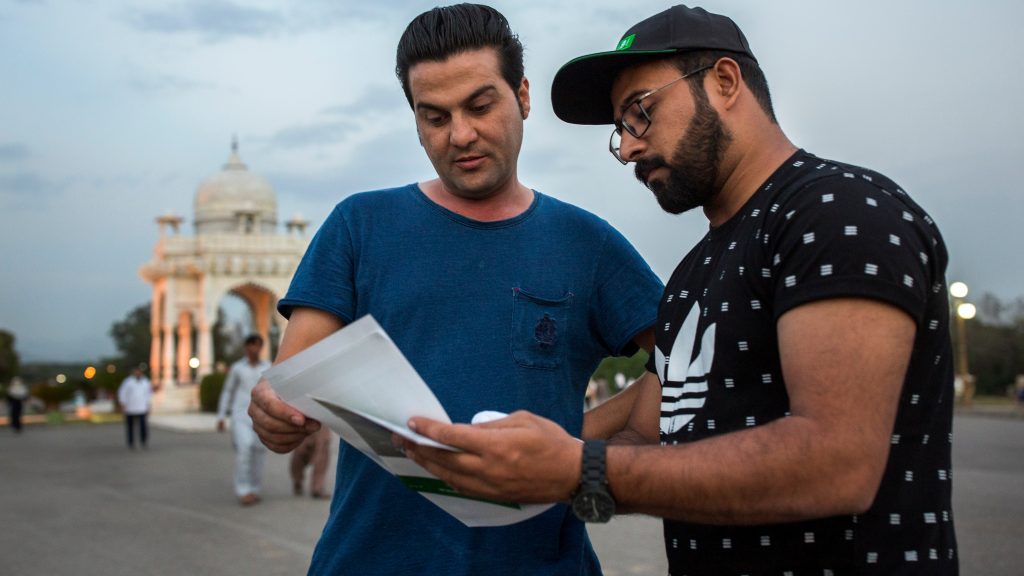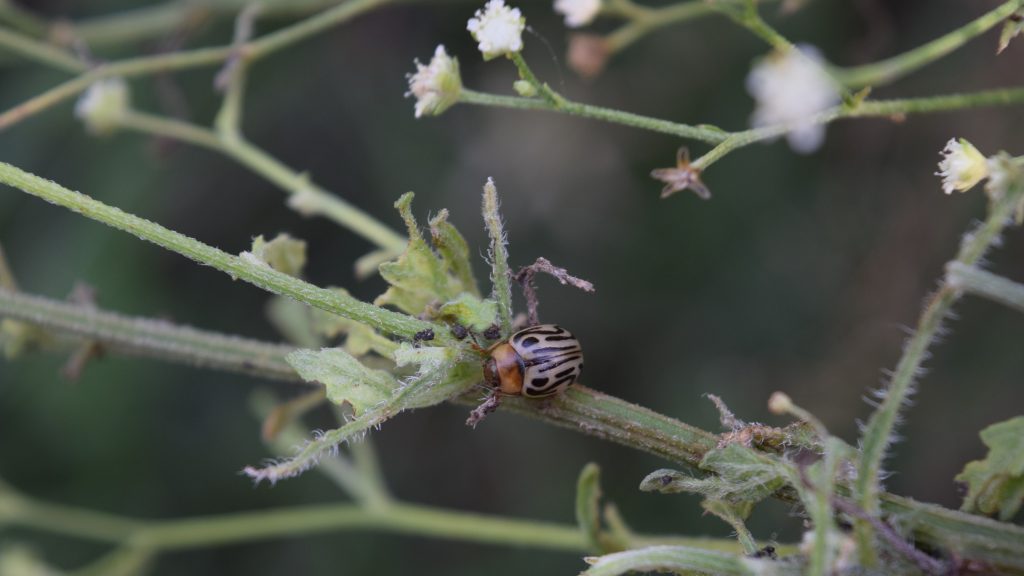Dangerous waterweed spreading in Southern Africa
By Baraka Rateng’. Reblogged from SciDev.Net. A dangerous waterweed is spreading across water bodies in Southern Africa and could soon strangle life-supporting services such as fishing if it is not controlled, a scientist says. The waterweed called Limnobium laevigatum or South American sponge plant floats on water bodies and has the potential to invade other plants and decrease biodiversity, according…
CABI scientists are leading the fight to control one of the UK’s most invasive weeds – Himalayan balsam
CABI experts in the field of classical biological control are leading the fight to manage one of the UK’s most invasive weeds – Himalayan balsam – thanks to the nationwide release of the rust fungus Puccinia komarovii var. glanduliferae. Dr Carol Ellison, who has over 30 years’ experience of the biological control of weeds using…
Zygogramma bicolorata released at selected sites in Pakistan as biological control of parthenium
Parthenium hysterophorus is a highly destructive weed which has invaded and is widespread in around 48 countries in Africa, Asia, and the South Pacific. In Pakistan the weed is spreading rapidly westwards and southwards across both rural and urban landscapes, affecting native ecology and harming agriculture.
Invasives killed the biodiversity star
The start of 2019 brought sad news when George, the last tree snail of his kind (Achatinella apexfulva) died on New Years Day. His death highlights the plight of Hawaiian snails and epitomises the rapid decline of biodiversity on the Hawaiian Islands.
CABI scientist helps provide a comprehensive review of research on Tuta absoluta in Africa
The South American tomato leafminer, Tuta absoluta, is a devastating invasive pest of tomato crops in several areas around the world, including Africa where the problem is greatest. Given the wealth of research conducted on T. absoluta, a recent publication involving one of CABI’s scientists, Dr Marc Kenis, has compiled a comprehensive review of the…
The twelve pests of Christmas (trees)
For many, December means celebrating Christmas and a central part of that is a Christmas tree. Evergreen trees have been used in celebration for centuries. The ancient Egyptians, Chinese, and Hebrews used evergreen trees, wreaths, and garlands to symbolize eternal life. Pagans worshiped trees, and Romans used evergreen wreaths during the festival of Saturnalia. The…
Fall armyworm radio campaign for next growing season launches in Zambia
CABI in partnership with Ministry of Agriculture in Zambia through the National Agricultural Information Services (NAIS) has launched a national radio campaign focusing on the identification, prevention and management of fall armyworm. The campaign aims to help smallholder farmers in Zambia minimise fall armyworm losses and learn how to safely use chemicals.
Invasives Most Read 2018
2018 has been a bumper year for the CABI Invasives blog, with 4 times more posts than 2017 and over twice the number of views (over 20,000!). With so many articles published this year, we have compiled a list of the top 20 most read to round off 2018.
Addressing the root of the problem — why plant health and evidenced-based interventions matter to global development
by Duncan Barker (Research and Evidence Division, DFID) and Dr Roger Day (CABI). Reblogged from the DFID Research blog. Global agriculture faces a myriad of threats, of which one of the greatest is invasive species. With no native organisms to control them, invasive species such as plant pests and diseases spread out of control, damaging crops and…
Action on Invasives short course on classical weed biological control
Invasive species pose a serious threat to food security, biodiversity, water resources, human and animal health, and economic development. It is widely acknowledged that integrated control is the most effective strategy in managing invasive plants where it involves the use of herbicides, manual or mechanical control, and biological control agents in an integrated way. Last…










